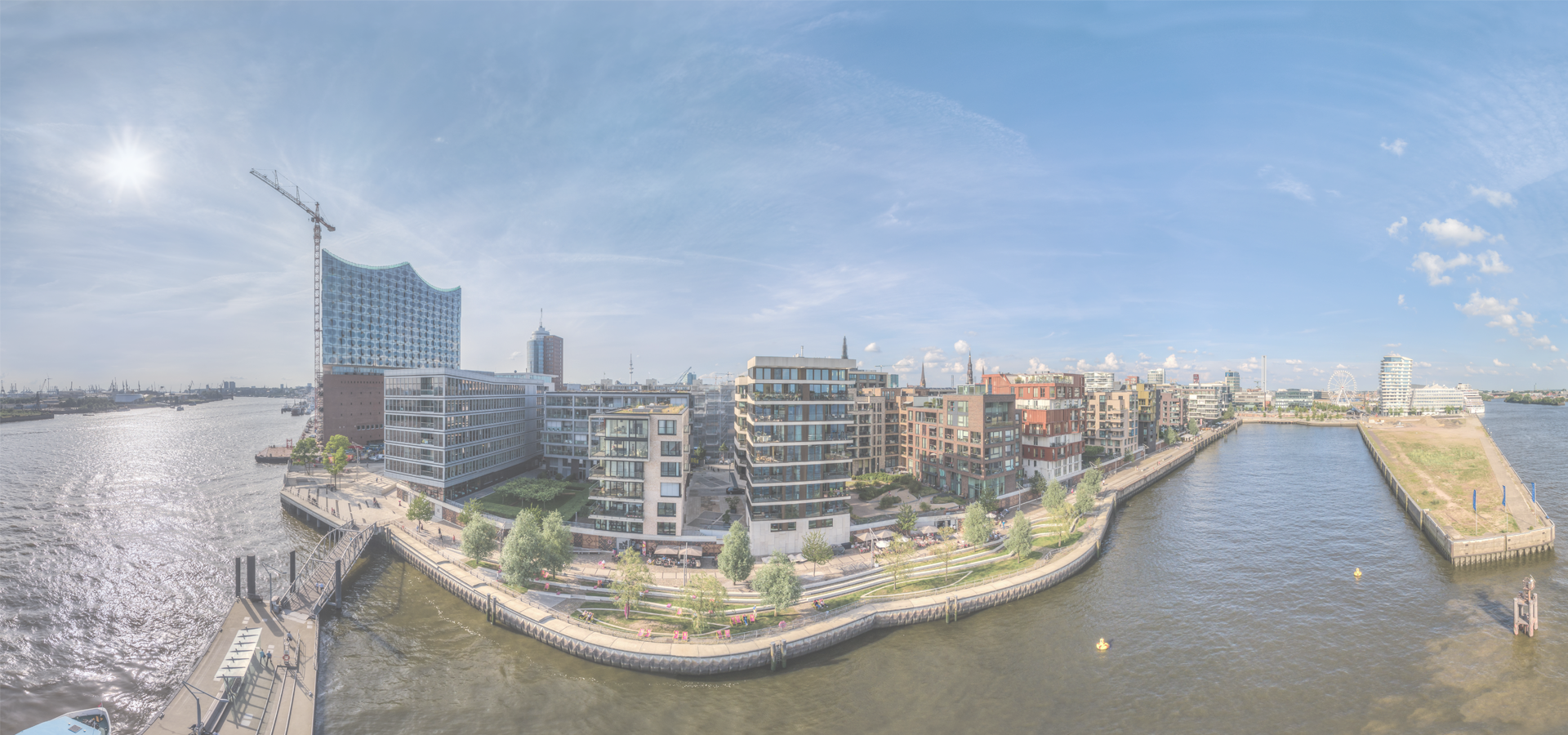Altona, Hamburg, Germany
🇩🇪 Altona is the westernmost urban borough of the German city state of Hamburg, on the right bank of the Elbe river. From 1640 to 1864 Altona was under the administration of the Danish monarchy. Altona was an independent city until 1937.
1History Altona was founded in 1535 as a village of fishermen in what was then Holstein-Pinneberg. In 1640, Altona came under Danish rule as part of Holstein-Glückstadt, and in 1664 was granted municipal rights by the Danish King Frederik III, who then ruled in personal union as Duke of Holstein. Altona was one of the Danish monarchy's most important harbor towns. The railroad from Altona to Kiel, the Hamburg-Altona–Kiel railway (Danish: Christian VIII Østersø Jernbane), was opened in 1844.
Because of severe restrictions on the number of Jews allowed to live in Hamburg until 1864 (with the exception of 1811–1815), a major Jewish community developed in Altona starting in 1611, when Count Ernest of Schaumburg and Holstein-Pinneberg granted the first permanent residence permits to Ashkenazic Jews. Members did business both in Hamburg and in Altona itself. All that remains after the Nazi Holocaust during World War II are the Jewish cemeteries, but in the 17th, 18th, and 19th centuries, the community was a major centre of Jewish life and scholarship. Holstein-Pinneberg and later Danish Holstein had lower taxes and placed fewer civil impositions on their Jewish community than did the government of Hamburg.
The wars between Denmark and the German Confederation — the First Schleswig War (1848–1851) and the Second Schleswig War (February–October 1864) — and the Gastein Convention of 1864, led to Denmark's cession of the Duchies of Schleswig and Holstein to Prussian administration and Lauenburg to Austrian administration. Along with all of Schleswig-Holstein, Altona became part of the Kingdom of Prussia in 1867.
In 1871, Altona became a part of the German Empire. In the same year, the town was hit by cholera, with a minimum of 16 casualties in Altona.
During the Weimar era following World War I, the town of Altona was disturbed by major labor strikes and street disorders. Inflation in Germany was a major problem. In 1923, Max Brauer, the mayor of Altona, directed that town personnel should be paid in part with gas meter tokens, as the tokens did not lose value from inflation. The most notable event at that time was the Altona Bloody Sunday (Altonaer Blutsonntag) on 17 July 1932, when 18 people were killed, all but two by police, during a violent clash between Nazi marchers and members or supporters of the Communist Party. After police raids and a special court, on 1 August 1933, Bruno Tesch and others were found guilty and put to death by beheading with a hand-held axe. In the 1990s, the Federal Republic of Germany reversed the convictions of Tesch and the other men who were put to death, clearing their names.
In 1938, the Greater Hamburg Act removed Altona from the Free State of Prussia in 1937 and merged it (and several surrounding towns) with the Free and Hanseatic City of Hamburg.
On 1 February 2007, the Ortsämter (district offices) in Hamburg were done away with. In Altona, the districts of Blankenese, Lurup and Osdorf had existed and had local offices. On 1 March 2008, the Schanzenviertel neighborhood, which had spanned parts of the boroughs of Altona, Eimsbüttel and Hamburg-Mitte, became the Sternschanze quarter, the entirety of which is now in the Altona borough.
1Geography The border of Altona to the south is the River Elbe, and across the river the state of Lower Saxony and the boroughs of Harburg and Hamburg-Mitte. To the east is the borough of Hamburg-Mitte and to the north is the borough of Eimsbüttel. The western border is with the state of Schleswig-Holstein. According to the statistical office of Hamburg, Altona has an area of 77.5 km² or 29.9 sq mi in 2006.
1Quarters Politically, the following quarters (Stadtteile) are part of Altona borough: 1 Altona-Altstadt; 2 Altona-Nord; 3 Bahrenfeld; 4 Ottensen; 5 Othmarschen (including parts of Klein Flottbek); 6 Groß Flottbek; 7 Osdorf; 8 Lurup; 9 Nienstedten (including parts of Klein Flottbek); 10 Blankenese; 11 Iserbrook; 12 Sülldorf; 13 Rissen; 14 Sternschanze.
1Transport Altona is the location of a major railway station, Hamburg-Altona, connecting the Hamburg S-Bahn with the regional railways and local bus lines.
The A 7 autobahn passes through Altona borough.
According to the Department of Motor Vehicles (Kraftfahrt-Bundesamt), in Altona 87,131 private cars were registered (359 cars per 1000 people).
1Europe/Berlin/Hamburg

Altona has a population of over 270,263 people. Altona also forms part of the wider Hamburg Metropolitan Region which has a population of over 5,300,000 people.
To set up a UBI Lab for Altona see: https://www.ubilabnetwork.org Twitter: https://twitter.com/UBILabNetwork
🇩🇪 Neubrandenburg 53.558
🇨🇲 Nkongsamba 9.933
🇩🇪 Werra-Meißner 9.933
🇩🇪 Hildesheim 9.951
🇩🇪 Neumünster 9.983
🇩🇪 Wilhelmsburg 9.992
Locations Near: Altona 9.93333,53.55
🇩🇪 Wilhelmsburg 9.992,53.519 d: 5.2
🇩🇪 Hamburg-Nord 10,53.617 d: 8.6
🇩🇪 Pinneberg 9.8,53.633 d: 12.8
🇩🇪 Norderstedt 10,53.7 d: 17.2
🇩🇪 Buchholz in der Nordheide 9.867,53.317 d: 26.3
🇩🇪 Winsen (Luhe) 10.217,53.367 d: 27.7
🇩🇪 Geesthacht 10.37,53.443 d: 31.3
Antipodal to: Altona -170.067,-53.55
🇹🇴 Nuku'alofa -175.216,-21.136 d: 16384.3
🇹🇴 Nukuʻalofa -175.2,-21.133 d: 16384.2
🇦🇸 Pago Pago -170.701,-14.279 d: 15648
🇼🇸 Apia -171.76,-13.833 d: 15596.2
🇵🇫 Papeete -149.566,-17.537 d: 15636.8
🇺🇸 Hilo -155.089,19.725 d: 11741.2
🇺🇸 Maui -156.446,20.72 d: 11653.4
🇺🇸 Maui County -156.617,20.868 d: 11639.7